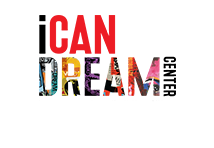
3 Underserved and Overlooked Student Populations
3 Underserved and Overlooked Student Populations in Public Schools
When it comes to equity in education, we often think of ethnic and racial minorities, students with disabilities, or students from low-socioeconomic backgrounds. However, there is no one-size-fits-all when it comes to equity.
There are many student populations that can use extra resources.
This blog post explores some underserved student groups that might go overlooked for various reasons.
It could be because their problems are not as visible, don’t seem as important, or in some cases, even seem too controversial for educators to address.
Consider the following student populations that might need extra support in your community:
1) Students in Food Insecure Homes
17.9% of homes with children in the United States face food insecurity. Children in these homes either don’t have a reliable source of meals, or an insufficient quantity or quality of food.
This alone is terrible, but the consequences of food insecurity also transfer to the child’s school life.
Children who are food insecure and/or have limited access to healthy meals will have trouble concentrating both physically and mentally at school.
The long-term consequences are very serious:
- Food insecurity is correlated with lower attendance, lower reading and math scores, and a reduction in a child’s chance of graduating.
- Is associated with poor child health
- Food insecure children are twice as likely to have seen a psychologist or been suspended by the time they are teenagers.
The National School Lunch Program helps but imagine the anxiety some children face as the weekend, or summer, looms and they know they’re about to lose access to consistent meals.
How can educators help these students?
Potential Strategies:
- Do your best to ensure families are familiar with and how to apply for SNAP, WIF and the national school lunch program. WIC and the national school lunch program. According to feedingamerica.org, only 41% of the households they serve receive SNAP benefits when an estimated 88% could be eligible.
- Consider starting a school food pantry to allow families in need an easy, convenient, place to pick up nutritious food. Leftover cafeteria food might even be able to be repurposed here.
- Consider starting a backpack program that sends home a simple breakfasts and lunches for students to enjoy on weekends and school holidays.
- Consider starting a school breakfast program, summer meals program, or after school meals program.
2) Foster Care Youth
Approximately 400,000 students are in foster care at any given time. That sounds like a large number, but it’s actually less than 1% of all public-school students. Helping them succeed is especially challenging for educators. Why?
Foster students are often not known to educators due to frequent school changes, privacy laws, and lack of data sharing between child welfare and K–12 agencies. Luckily, change is on the horizon thanks to some recent research.
The State of Illinois allowed researchers to compare the state’s child welfare records to education records and found that students in Illinois’ foster care have the:
- Lowest graduation rate
- Highest dropout rate
- Lowest state testing participation rate
This study uncovered a telling statistic. Only 58% of students in foster care graduated high school, lower than any other sub-group included English language learners and students with disabilities.
These statistics really shine a light on how important data sharing can be in helping identify the kids who need extra support the most.
3) Students with Incarcerated Parents
In the United States, 2.7 million children have a parent in jail or prison.
When a child has an incarcerated parent, not only are they left without a parent, but they also must deal with the stigma of having a parent in prison or jail. This compounds with any trauma they may have incurred resulting from the arrest or crime (i.e. exposure to violence, or drug and alcohol abuse).
Potential Strategies:
- Don’t make assumptions about how a student will be affected by their parent being incarcerated but do be aware and attentive.
- Connect students with a school counselor
- Look into connecting families with non-profit, government, and community programs designed to help children of incarcerated parents.
- Consider providing books about families with an incarcerated family member in the classroom library.
We invite you to Stay tuned to an upcoming post on how to uncover the inequities specific to your school and how a Professional Development opportunity from iCan Dream Center can help educators move the needle toward solutions.
